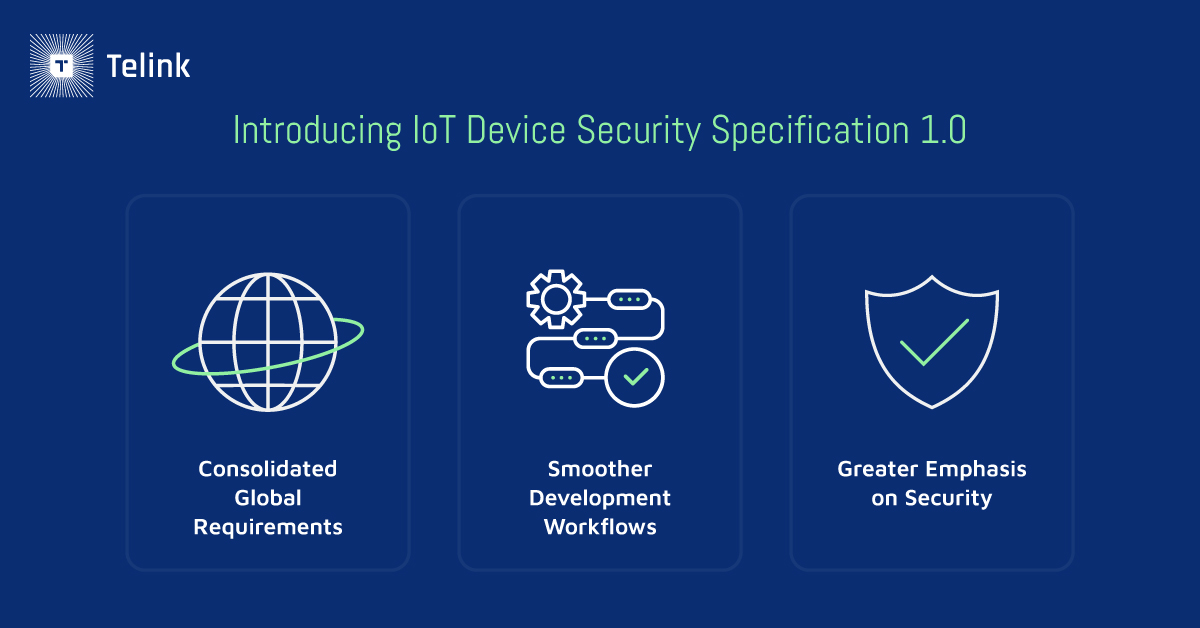



PLEASE ROTATE ME


Telink Staff
March 20, 2024
Standards

No more jumping hurdles. With the first iteration of the IoT Device Security Specification by the Connectivity Standards Alliance, developers can streamline global regulation compliance.
From New York to Singapore to Paris and beyond, keeping up with global IoT security regulations can be complicated. Lengthy compliance testing can also drastically slow down progress for device manufacturers. To reduce this friction, the Connectivity Standards Alliance (CSA) has finally launched IoT Device Security Specification 1.0 — a first in standardizing international security requirements for IoT products.
A collaboration project between nearly 200 CSA member companies, including Telink, this long-awaited specification combines baseline cybersecurity benchmarks from Singapore, Europe, and the United States to unify and optimize the development and certification process. Here’s a closer look at what you can expect.

For device manufacturers, having to go through several rounds of similar tests to meet the different cybersecurity requirements of various jurisdictions can be redundant, time-consuming, and costly. IoT Device Security Specification 1.0 offers a single path to production by consolidating leading global requirements, with authorized testing centers that check for all of these standards in one place.
A few requirements mentioned in this specification include:
The CSA’s Product Security Certification Program takes into account the different types of devices that make up a smart home or office. As a result, developers can meet compliance expectations through a single testing period, rather than having to invest time and resources into separate evaluations. With fewer steps to the finish line, device manufacturers can enjoy a faster development process and time-to-market with the assurance that their product already meets international standards.
The more complex and interconnected an IoT network is, the more vulnerable it is to a cyberattack — if it’s not protected well enough. With so many nodes communicating with each other, it’s essential to test products against all types of threats. With this new CSA specification, developers can make security a priority, while adhering to international regulations that are designed to address common concerns and emerging risks.
The Cyber Security Agency of Singapore is already dedicated to embracing the benefits of this specification, having signed a Mutual Recognition Arrangement (MRA) to solidify international cooperation in this new endeavor.
Now, it’s only a matter of time before developers around the world start deploying a roster of products with unified security compliance. Get a head start with Telink’s SoCs — designed with all the features your product needs to meet the requirements of the IoT Device Security Specification. From device authentication to data privacy, our semiconductor chips are ready to help you build products that make the IoT safer and more secure.
Ready to be a part of this revolution? Visit Telink’s wiki to learn more about our development tools, or ask us a question through our Technical Forum or by contacting us directly today.